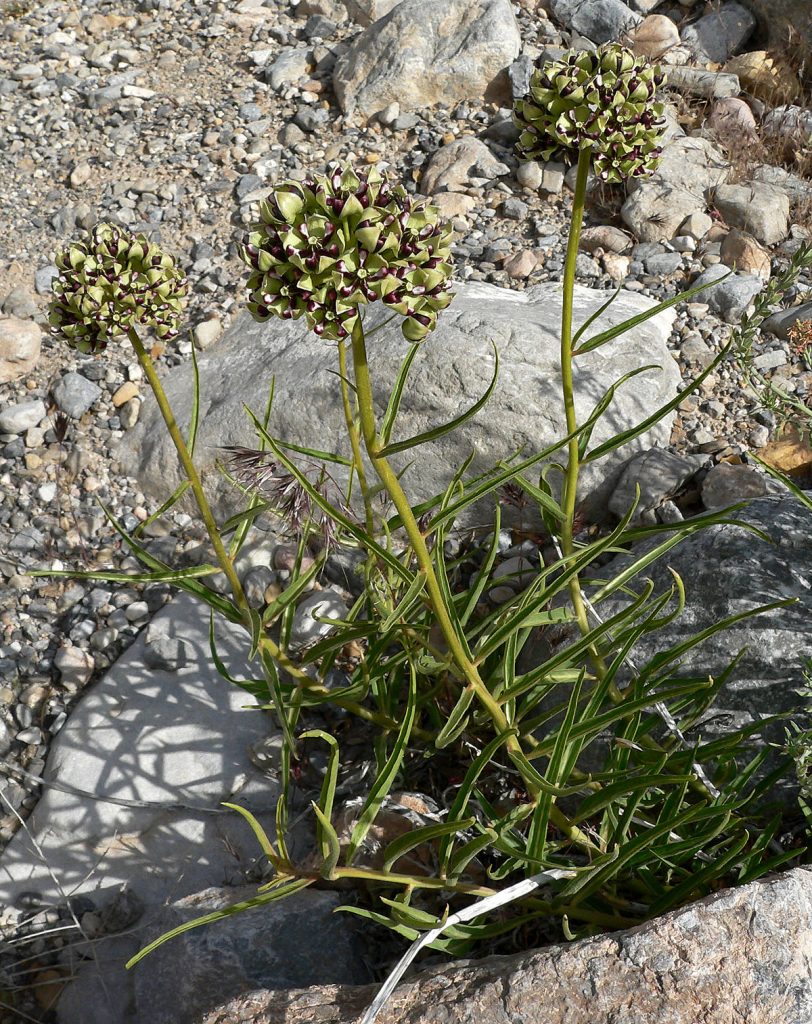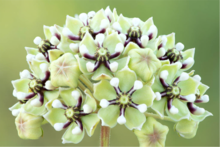
Also known as spider milkweed, this clump-forming herbaceous perennials is native to southwestern US and northern Mexico, and belongs to the dogbane family, Apocynaceae, that also includes bluestar, periwinkle, and oleander. It grows 1-2′ tall from a taproot and has 1-10 erect or sprawling stems with a milky latex sap. The long narrow leaves are 4-8″ long and fold upward from a central vein. From spring into summer, terminal umbels of waxy flowers appear on sturdy stems. The umbels are 2-4″ wide and consist of 20+ tiny flowers with 5 backward-pointing pale-green petals that cup over 5 white hoods that store nectar. The fruit is a curved follicle 4-10″ long that resembles antelope horns and contains many brown seeds tufted with silky hairs . The leaves are a food source of Monarch larvae and the flowers provide nectar for adult Monarchs as well as hummingbirds, bees and other beneficial insects. Antelope horns milkweed can become weedy but is a good choice for wildlife, native plants, butterfly, and prairie gardens. The seed pods are valued for dried arrangements. The genus name, Asclepias, honors the Greek god of medicine, Askelpios . The specific epithet, asperula, is from the Latin word asper meaning rough.

Type: Herbaceous perennial
Bloom: Terminal umbels of greenish white flowers from spring into summer
Size: 1-2′ H x 2-3′ W
Light: Full sun
Soil: Average, dry to medium moist, well-drained; prefers rocky or sandy soil but tolerates clay and wet soils, and is drought tolerant
Hardiness: Zones 7-9
Care: Low maintenance
Pests and Diseases: None of significance but susceptible to aphids
Propagation: Seed, cuttings
Companion Plants: Narrow leaf cone-flower, Liatris (Blazing star), Lantana
Outstanding Selections: None available
Photo Credits: Wikipedia